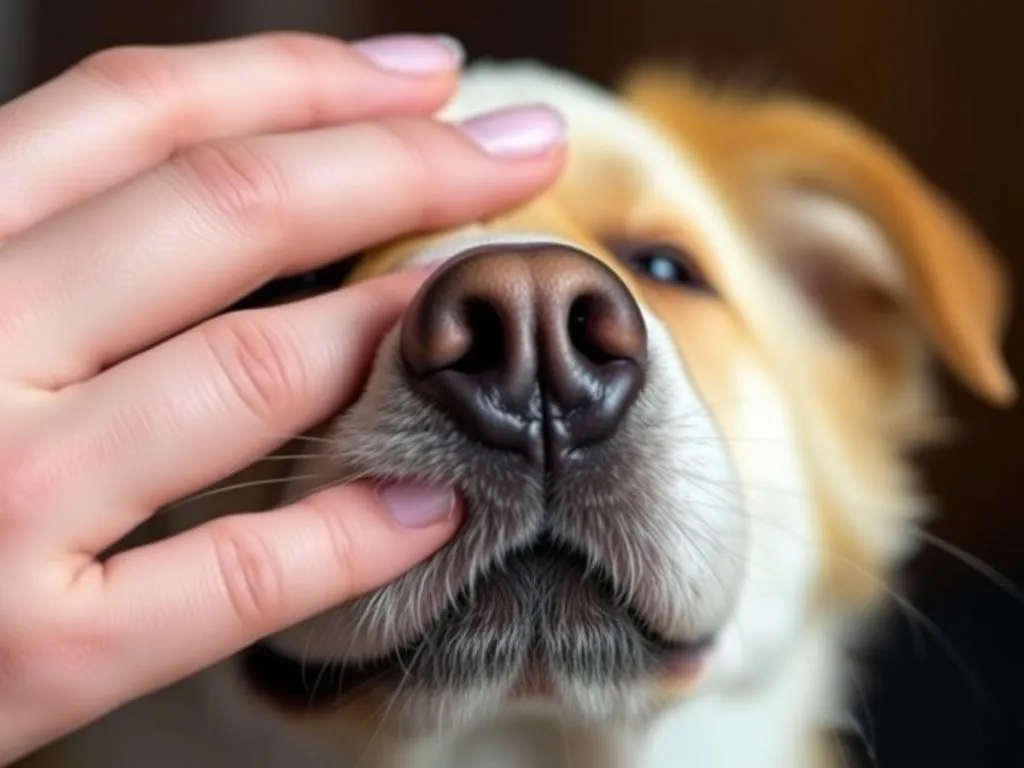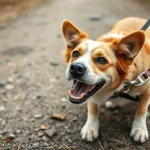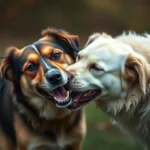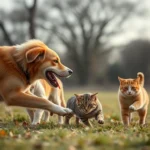
Introduction
Understanding dog behavior is essential for any pet owner. It encompasses a wide range of actions, reactions, and interactions that can give insight into a dog’s emotional state and health. From barking and growling to more subtle cues like twitching, being attuned to your dog’s behavior can enhance your relationship with them and ensure their well-being.
One particular behavior that often raises questions among dog owners is twitching when their skin is touched. This phenomenon can be confusing, prompting many to wonder: Why do dogs twitch when their skin is touched? Understanding the reasons behind this twitching can help pet owners interpret their dog’s responses more effectively.
Understanding Dog Behavior
The Basics of Canine Behavior
Normal dog behavior includes a wide range of actions influenced by factors such as breed, environment, and individual personality. Dogs display various behaviors to communicate their needs and feelings. Recognizing these behaviors helps owners respond appropriately, ensuring a harmonious relationship.
Common Behaviors in Dogs
Dogs exhibit numerous behaviors, including barking, growling, wagging their tails, and, of course, twitching. Each behavior can signify different emotions or needs. For instance, barking might indicate excitement or alertness, while growling can signal discomfort or warning. Understanding these signals is crucial, as dogs communicate largely through body language.
The Twitching Phenomenon
What is Twitching?
Twitching in dogs is characterized by involuntary muscle contractions that can occur in various parts of the body, often noticed when a dog is touched or petted. Twitching can be classified as either normal or abnormal. Normal twitching is typically harmless and can be a natural response to touch or stimulation. In contrast, abnormal twitching may indicate underlying health issues.
Contexts of Twitching
Twitching can happen in different contexts. For instance, a dog might twitch when being petted, as a reflex to the sensation. This twitching can also occur during moments of relaxation, excitement, or even while dreaming. Understanding the context in which twitching occurs is crucial for interpretation.
Reasons Why Dogs Twitch When Their Skin Is Touched
Sensory Response
Dogs have a highly developed sense of touch, with sensory receptors distributed throughout their skin. When touched, these receptors send signals to the nervous system, which can result in twitching. This response can be likened to a ticklish sensation, where the dog’s body reacts involuntarily to the stimuli.
Reflex Actions
Reflexes play a significant role in why dogs twitch. When the skin is touched, it can trigger involuntary muscle contractions, leading to twitching. For example, if a dog is startled or feels a sudden touch, reflexive twitching may occur as a natural response to the stimulus.
Emotional Responses
Touch can elicit a variety of emotional responses in dogs. A gentle stroke might bring feelings of comfort and relaxation, resulting in mild twitching as the dog settles into a state of contentment. Conversely, if a dog has had negative experiences with touch in the past, such as rough handling or pain, they may twitch as a sign of anxiety or discomfort. Thus, individual experiences play a significant role in how dogs react to touch.
Health Considerations
While twitching can often be harmless, it can sometimes signal underlying health issues. Skin allergies, neurological disorders, or even pain can cause abnormal twitching. If a dog exhibits excessive or persistent twitching, it’s advisable to consult a veterinarian to rule out any medical concerns.
Observing and Interpreting Twitching Behavior
Signs of Healthy Twitching
Healthy twitching often appears as quick, brief movements that do not disrupt the overall behavior of the dog. Signs that twitching is benign include:
- Occasional twitching during petting
- Relaxed body posture
- Lack of other concerning behaviors (e.g., whining, aggression)
Observing these characteristics can help owners understand when twitching is simply a natural response.
When to Be Concerned
Not all twitching is benign. Pet owners should be alert to warning signs, including:
- Excessive twitching that lasts for a prolonged period
- Twitching accompanied by other unusual behaviors (e.g., disorientation, loss of control)
- Signs of distress or discomfort
If any of these symptoms are present, it may be time to seek professional advice. Understanding the difference between normal and concerning twitching is crucial for the health and well-being of the dog.
Tips for Managing Twitching Behavior
Gentle Petting Techniques
Using gentle petting techniques can minimize twitching. Owners should be mindful of their dog’s reactions during petting sessions. Here are some tips:
- Use slow, gentle strokes rather than quick or abrupt movements.
- Pay attention to body language; if the dog seems tense, adjust your approach.
- Avoid areas that may be sensitive or trigger twitching.
Creating a Calm Environment
A calm environment can significantly influence a dog’s behavior. Here are some strategies to create a soothing atmosphere:
- Establish a routine that includes regular exercise and downtime.
- Minimize loud noises and sudden movements that may startle the dog.
- Create a cozy space with familiar blankets and toys to enhance comfort.
Engaging with Professional Advice
If twitching becomes a concern, seeking professional guidance can be beneficial. Dog owners should consider reaching out to:
- Veterinarians to discuss potential health issues.
- Animal behaviorists for insights on managing anxiety or stress-related twitching.
- Training professionals to learn more about dog body language and communication.
Conclusion
In summary, understanding why dogs twitch when their skin is touched involves recognizing the interplay of sensory responses, reflex actions, emotional states, and health considerations. By observing their dog’s behavior and being aware of what twitching signifies, owners can foster a deeper bond with their furry companions.
Encouraging responsible pet ownership involves not only understanding these behaviors but also seeking help when necessary. Being attentive to your dog’s needs and responses will ultimately lead to a happier, healthier relationship.









